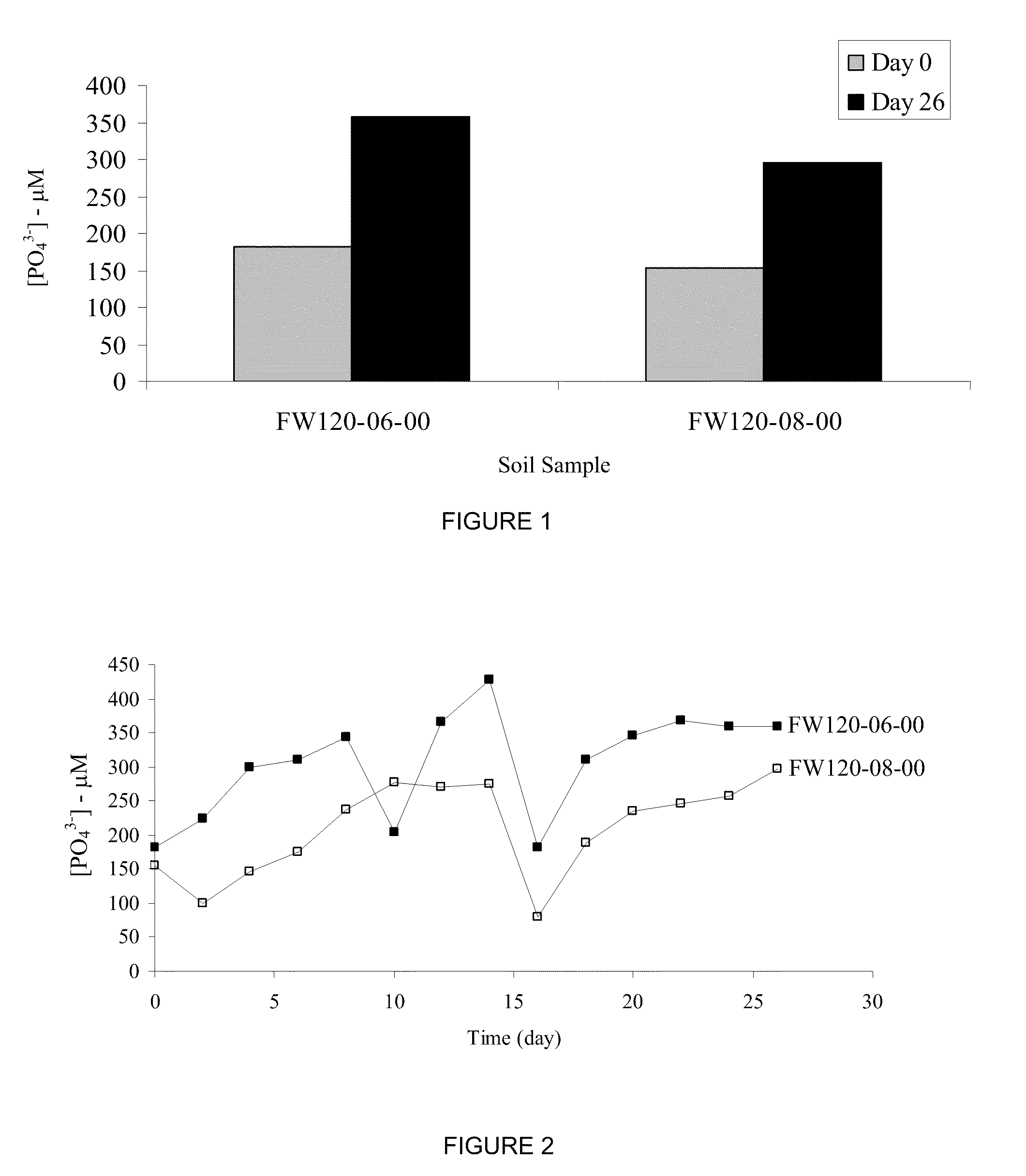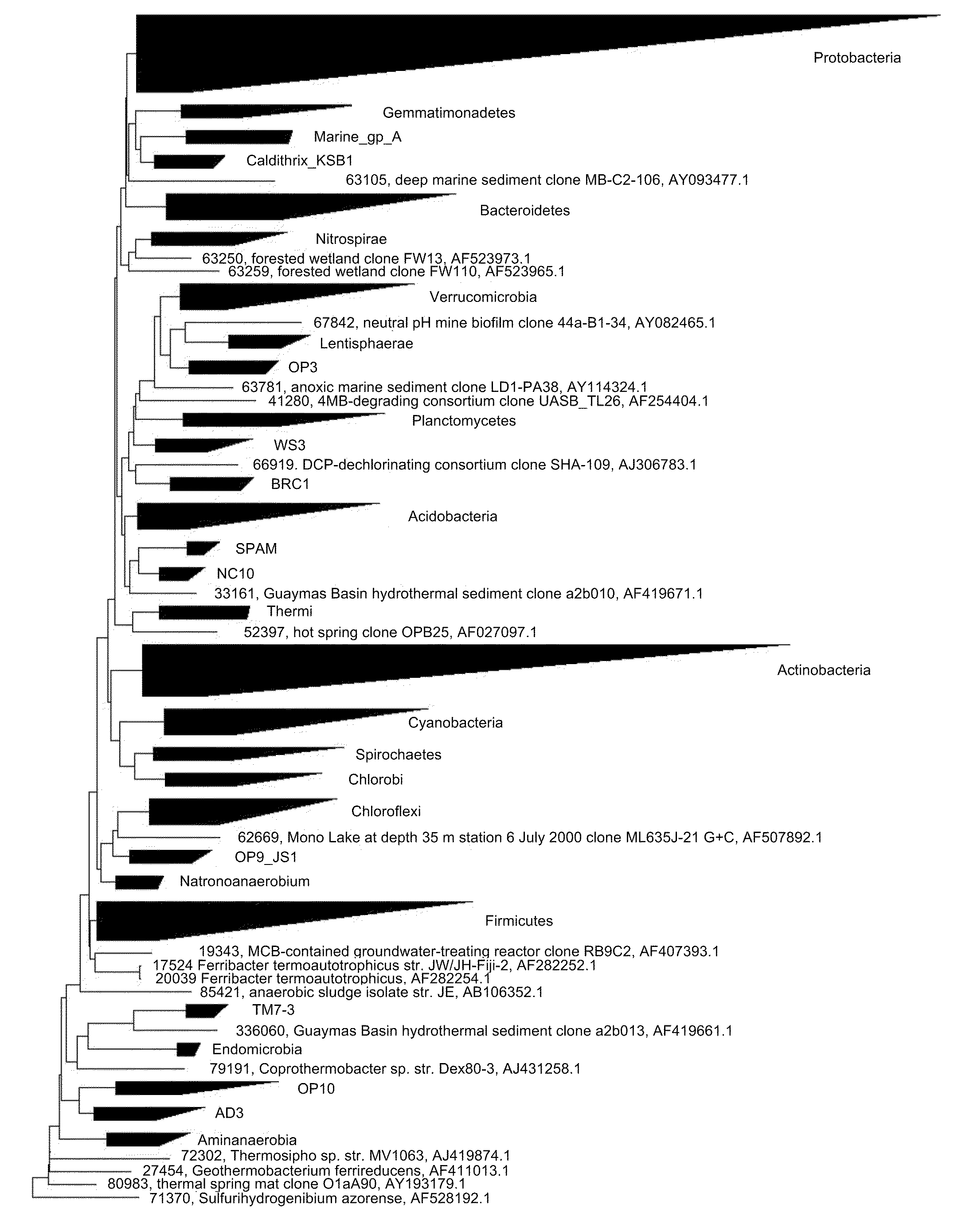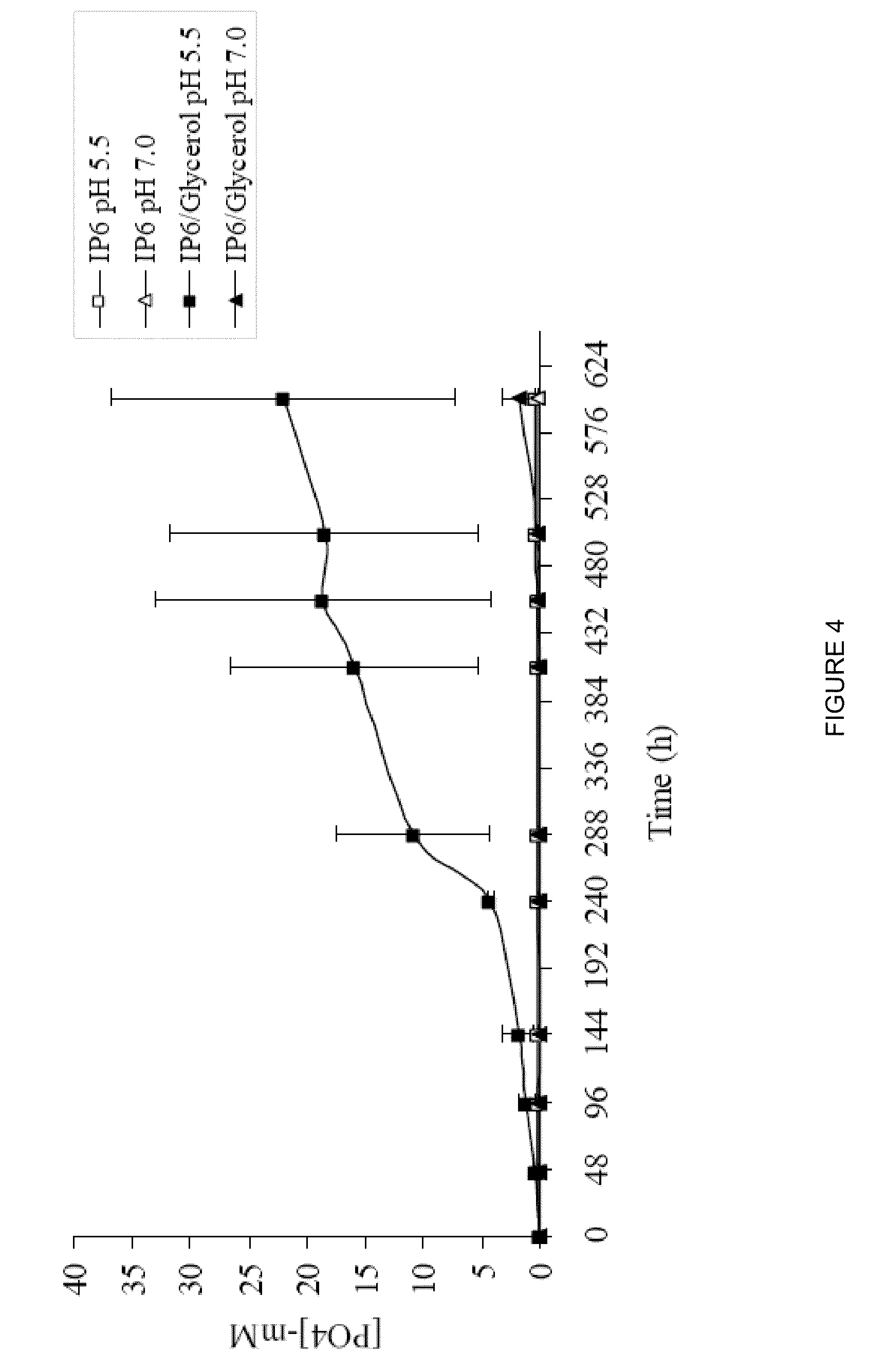Bacterial biomineralization of contaminants
a technology of biomineralization and contaminants, applied in the field of bacteria biomineralization of contaminants, can solve the problems of only achieving the goal of strategy, and the remediation of hazardous waste sites, particularly those containing metals and radionuclides, remains one of the most costly environmental challenges currently faced
- Summary
- Abstract
- Description
- Claims
- Application Information
AI Technical Summary
Benefits of technology
Problems solved by technology
Method used
Image
Examples
example 1
Bacterial Enzymatic Hydrolysis of Poultry Manure
[0046]Subsurface strains and growth conditions. Metal-resistant subsurface strains Arthrobacter spp. (X34, V45, AA20), Bacillus spp. (Y7, X18, Y9-2) and Rahnella spp. (Y9602, Y4, Y29) were previously isolated from radionuclide- and metal-contaminated subsurface soils collected from the Oak Ridge Field Research Center (ORFRC) as described in Martinez and colleagues (2006). Detailed geology, chemistry and site descriptions are available on the DOE Environmental Remediation Sciences Program website (http: / / www.esd.ornl.gov / nabirfrc / ). Strains were isolated from soil core samples as described in Martinez and colleagues (2006) from sites where the saturated zones contained elevated uranium, other radionuclides and heavy metals (Brooks, 2001). Strain identification was previously confirmed by 16S rDNA phylogeny (Martinez et al., 2006). Media used to identify strains with constitutive phosphatase activity were TPMG (Riccio et al., 1997) and T...
example 2
Identification of Bacterial Population of Contaminated Soils.
[0049]The total diversity of organisms present in contaminated soils that were supplemented with glycerol-3-phosphate was assessed utilizing 16S rDNA analysis. FIG. 3 illustrates a phylogenetic tree representing 1084 unique bacterial strains. The size of the triangles correlate to the number of organisms detected within a given phylum or newly established grouping
[0050]This is the approach allows for the rapid identification of bacterial strains that have the ability to hydrolyze organophosphates in a given environment. One such example is Rahnella sp. Y9602. This Rahnella strain was incubated in minimal media at pH 5.5. or pH 7.0 supplemented with phytate (also referred to as inositol hexakisphosphate (IP6)) for 26 days in the presence and absence of the carbon source, glycerol (FIG. 4). The data indicates that the Rahnella strain supplemented with glycerol has an enzymatic optima at pH 5.5 for phytate when compared the p...
PUM
| Property | Measurement | Unit |
|---|---|---|
| Molar density | aaaaa | aaaaa |
| Fraction | aaaaa | aaaaa |
| Time | aaaaa | aaaaa |
Abstract
Description
Claims
Application Information
 Login to View More
Login to View More - R&D
- Intellectual Property
- Life Sciences
- Materials
- Tech Scout
- Unparalleled Data Quality
- Higher Quality Content
- 60% Fewer Hallucinations
Browse by: Latest US Patents, China's latest patents, Technical Efficacy Thesaurus, Application Domain, Technology Topic, Popular Technical Reports.
© 2025 PatSnap. All rights reserved.Legal|Privacy policy|Modern Slavery Act Transparency Statement|Sitemap|About US| Contact US: help@patsnap.com



